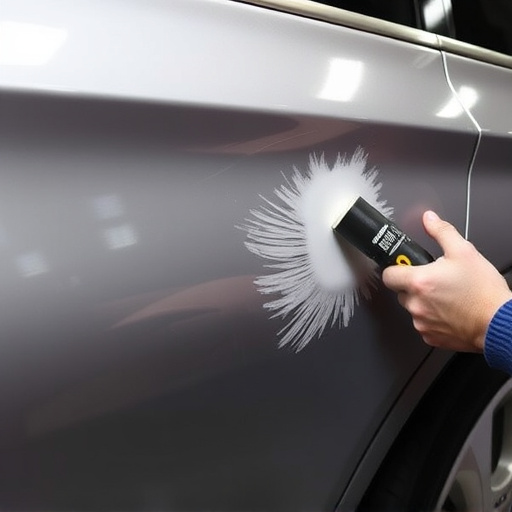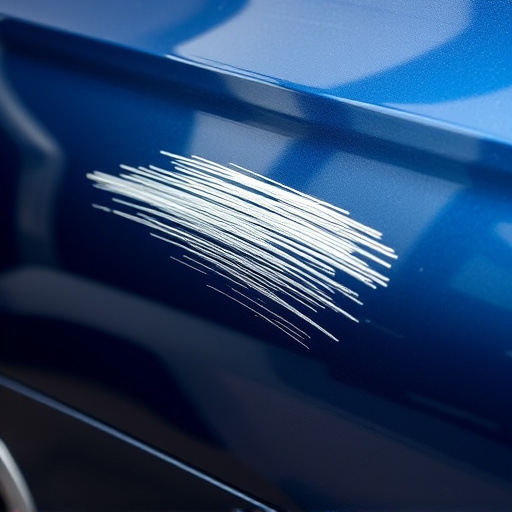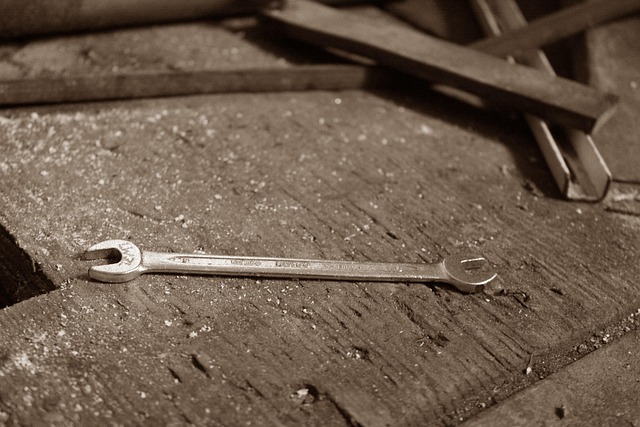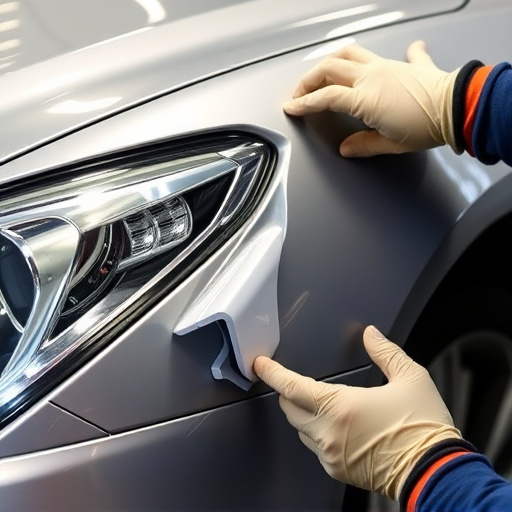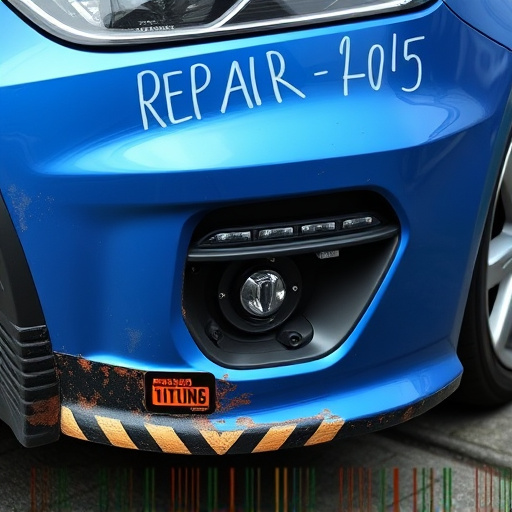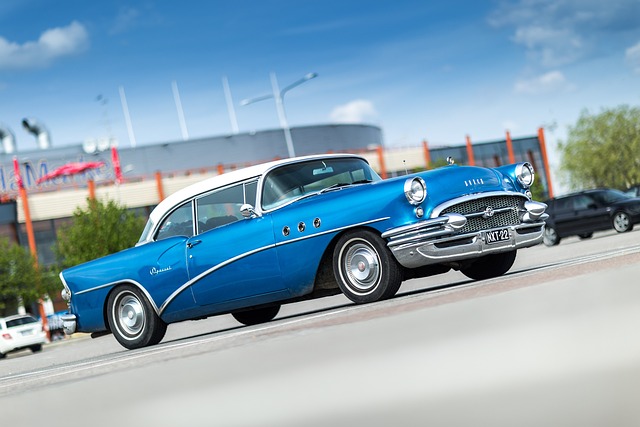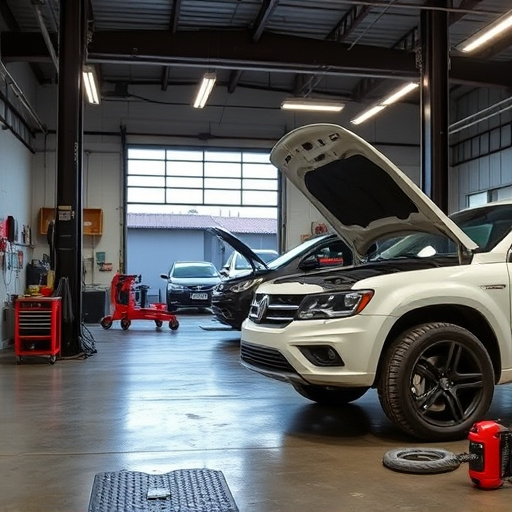Tesla's aluminum construction offers benefits like fuel efficiency but presents challenges in repairs, especially for dents. Specialized techniques and tools are required to maintain structural integrity and preserve aesthetics. A meticulous process includes inspection, alignment, heat treatment, sanding, priming, and painting. Prioritize safety, precision, and professional expertise for optimal Tesla aluminum body repair.
Tesla’s innovative use of aluminum in their vehicle construction offers lightweight durability, but it also presents unique challenges when repairs are needed. This article delves into the intricacies of Tesla aluminum body repair, focusing on fender and panel dents. We’ll explore why these repairs are crucial for maintaining both structural integrity and the iconic aesthetic of Tesla vehicles. From understanding the material’s properties to mastering the repair process, this guide offers insights into achieving expert-level results.
- Understanding Tesla Aluminum Body Construction and Why Repair is Necessary
- The Process of Tesla Aluminum Body Repair for Fender and Panel Dents
- Tips and Best Practices for Effective Tesla Aluminum Body Repair
Understanding Tesla Aluminum Body Construction and Why Repair is Necessary

Tesla’s use of aluminum in their vehicle construction offers numerous benefits, including lightweight frames that enhance fuel efficiency and handling. However, this material also presents unique challenges when it comes to repairs, especially for fender and panel dents. Unlike steel, aluminum doesn’t weld easily, requiring specialized techniques like extrusion or clamping for alignment. Over time, these areas of damage can weaken the structural integrity of the vehicle if not addressed properly.
When a Tesla experiences fender bender or other minor collisions, it’s crucial to turn to professionals specializing in Tesla aluminum body repair. These experts employ advanced tools and methods, such as computer-aided design (CAD) technology and hydro-thermal heating, to accurately replace dented panels without compromising the vehicle’s structural integrity. Regular tire services and automotive repairs may not suffice for aluminum body work, necessitating the expertise found in dedicated car body shops.
The Process of Tesla Aluminum Body Repair for Fender and Panel Dents
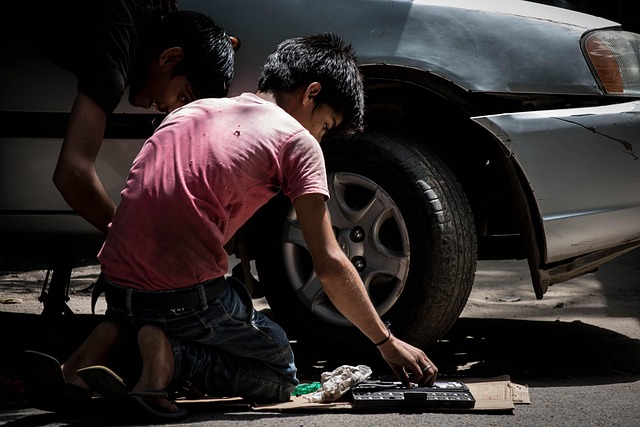
Tesla aluminum body repair for fender and panel dents involves a meticulous process designed to preserve the vehicle’s sleek, modern aesthetic. It starts with careful inspection to assess the extent of damage, ensuring every dent and bend is accurately identified. Skilled technicians then employ specialized tools and techniques tailored to aluminum repair, such as precision-cut tools and state-of-the-art heat treatment methods.
The process continues with meticulous body panel alignment, where each component is carefully manipulated back into its original form. This precise manipulation ensures the car’s structural integrity remains intact while achieving a seamless finish. Once aligned, the area undergoes sanding to remove any remaining imperfections, followed by careful priming and painting to match the vehicle’s exact color specifications. This attention to detail not only restores the Tesla’s visual appeal but also guarantees its longevity through expert automotive collision repair practices.
Tips and Best Practices for Effective Tesla Aluminum Body Repair
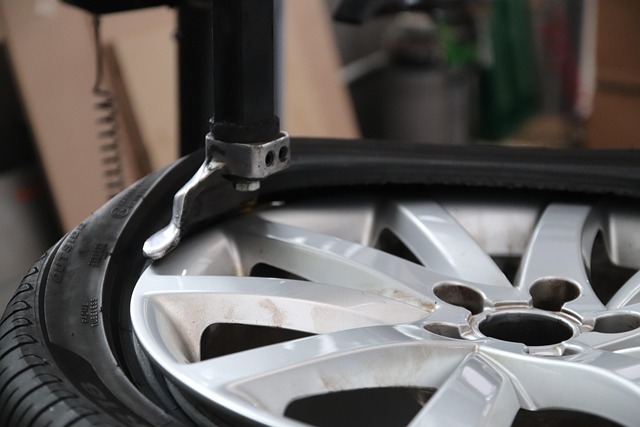
When undertaking Tesla aluminum body repair for fender dents or panel damage, it’s crucial to follow best practices. Start by preparing the workspace with proper ventilation and using a well-lit area. This is essential for safety and ensuring precise measurements. Before beginning any repair work, thoroughly clean and degrease the damaged area to remove any contaminants that could affect adhesion.
Use specialized tools designed for Tesla aluminum body repair, such as high-quality dent pullers and plastic hammer tools. These will help minimize damage to the surrounding panel and ensure a smooth finish. Always follow manufacturer guidelines for recommended filler and primer types. A reputable vehicle body shop with experience in automotive repair can offer expert advice tailored to your specific model. This ensures you achieve the best results, preserving the sleek and modern look of your Tesla.
Tesla’s use of aluminum in its body construction offers lightweight durability, but fender dents and panel damage can arise. Efficient repairs, focusing on techniques tailored for aluminum, are crucial to preserving the vehicle’s structural integrity and aesthetic appeal. By following the outlined process and best practices, Tesla owners can effectively manage minor body damages, ensuring their vehicles remain in top condition. Remember, proper Tesla aluminum body repair is key to maintaining both performance and the car’s distinctive look.


